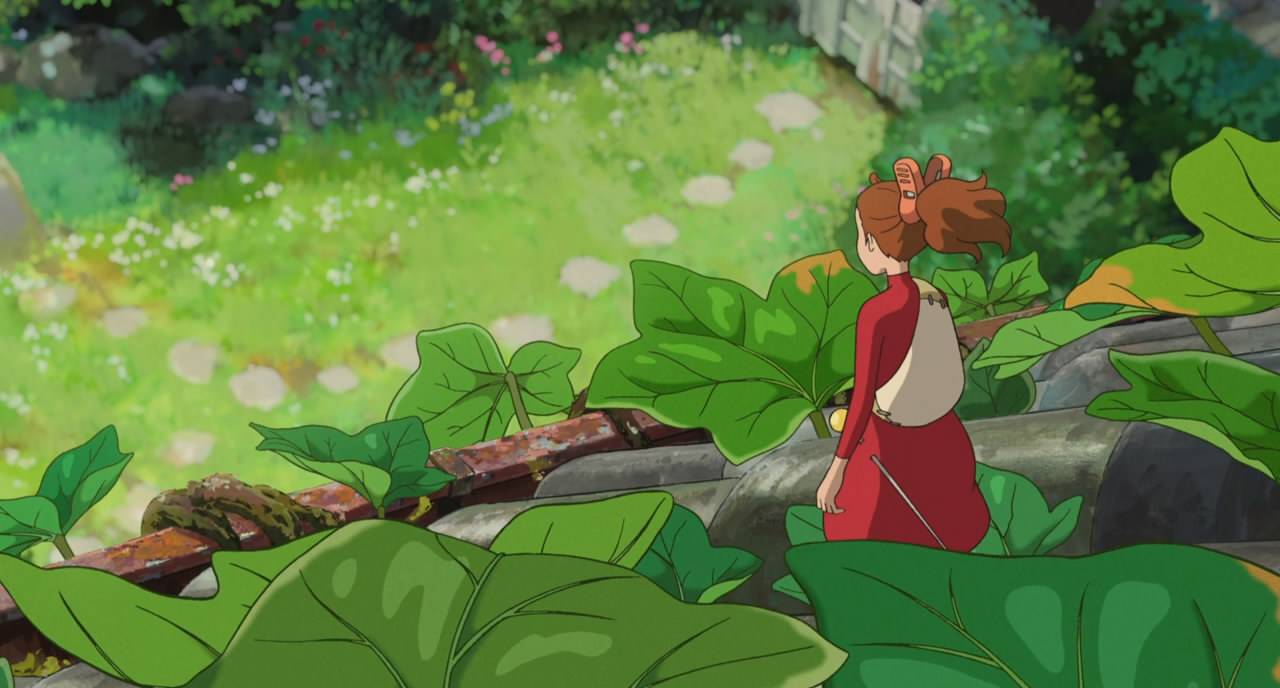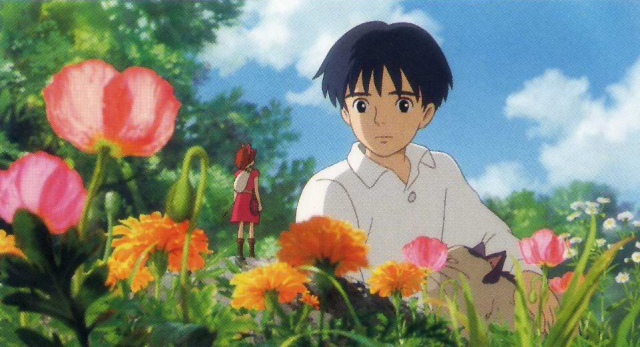|
Arrietty
is the
latest offering from Studio Ghibli and is the debut feature production
for lead
animator Hiromasa Yonebayashi. Studio Ghibli is of course the studio
that has
brought us the brilliance that is Spirited
Away (2001) and Howl’s Moving Castle
(2004), with
Yonebayashi’s contribution falling slightly short of the magic we have
come to
expect from the fantasy of the Ghibli animation. Based on the Mary
Norton
series of novels ‘The Borrowers’, the film makes a solid effort to
incorporate
the European feel of its source material and definitely triumphs in its
exploration of a world far removed from our own; the world of tiny
people
called borrowers.
Arrietty
follows
the lives of a family of borrowers living in a Japanese country
mansion. Living
under the floorboards and borrowing necessities from the house’s human
occupants,
the family consisting of Arrietty (Saoirse Ronan), Homily (Olivia
Coleman) and
Pod (Mark Strong) live in constant fear of discovery and take numerous
precautions to keep their secret. Their fears are soon realized when a
sickly
human boy Sho (Tom Holland) catches sight of Arrietty and attempts to
form a
friendship with her whilst helping the family borrow their livelihood.
It is
not Sho who displays malicious intent towards the family but rather the
housekeeper Haru (Geraldine McEwan), who uses Sho to discover the
whereabouts
of the hidden peoples and to finally prove their existence. When the
risk of detection
becomes too great, Pod makes the dangerous decision to venture out and
locate a
new dwelling, despite the added dangers of the world outside.

In this new venture the
Ghibli studio has tackled a much smaller plot and attempted to stretch
it over
a ninety minute period, allowing for a focus not so much on the
characters but
on the scale of big versus small. Ultimately several scenes look like
they were
lifted right out of the game Little Big
Planet (2008) and make me curious as to whether a video game
franchise is
in the works following this release. I say ‘attempted’ to stretch the
plot
because I don’t believe Yonebayashi truly succeeds in selling the film
as a
feature. The beginning was overly drawn-out and the action does not
take place
until the closing minutes, with the middle section sitting in a vast
purgatory
of visual splendour. The film would not be Ghibli if it weren’t
beautiful, yet in
comparison to the past decade of storybook enchantment from previous
features Arrietty is missing that ‘x’ ingredient
to fully form. Its greatest failing is its change over from suburban
England to
Japanese fairytale, with Mary Norton’s fiction working only within its
own
context. The setting of Yonebayashi’s film seems to try and balance
these two
cultures without fully surrendering to one and presenting a mismatch of
European mentality within an Eastern environment. This is not to say
the film
lacks content, with the relationship between Arrietty and Sho a
frontrunner for
mismatched but perfect friendships. The added development of Sho’s
frailty
echoes with the borrowers’ own realisations concerning the extinction
of their
species and the similarities they share with humans towards mortality
and
survival.

Arrietty
is
certainly not the best to come out of Studio Ghibli but it does have a
certain
charm. Despite a deficiency in continuity regarding the motivations of
the
villain Haru, the film has enough plot and brilliant framing to hold
the
interest of the audience. One hopes in the future that the next
offering will bring
back the grand scale storytelling that has made the Ghibli studio so
renowned,
both nationally and internationally, and bring back the enchantment
that was
sorely missing from this film.
|